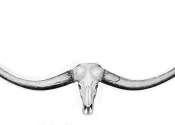In biology and ecology, extinction is the end of a species or group of taxa. The moment of extinction is generally considered to be the death of the last individual of that species (although the capacity to breed and recover may have been lost before this point). Because a species' potential range may be very large, determining this moment is difficult, and is usually done retrospectively. This difficulty leads to phenomena such as Lazarus taxa, where a species presumed extinct abruptly "re-appears" (typically in the fossil record) after a period of apparent absence.
Through evolution, new species arise through the process of speciation—where new varieties of organisms arise and thrive when they are able to find and exploit an ecological niche—and species become extinct when they are no longer able to survive in changing conditions or against superior competition. A typical species becomes extinct within 10 million years of its first appearance, although some species, called living fossils, survive virtually unchanged for hundreds of millions of years. Extinction, though, is usually a natural phenomenon; it is estimated that 99.9% of all species that have ever lived are now extinct.
Prior to the dispersion of humans across the earth, extinction generally occurred at a continuous low rate, mass extinctions being relatively rare events. Starting approximately 100,000 years ago, and coinciding with an increase in the numbers and range of humans, species extinctions have increased to a rate unprecedented since the Cretaceous–Tertiary extinction event. This is known as the Holocene extinction event and is at least the sixth such extinction event. Some experts have estimated that up to half of presently existing species may become extinct by 2100.









